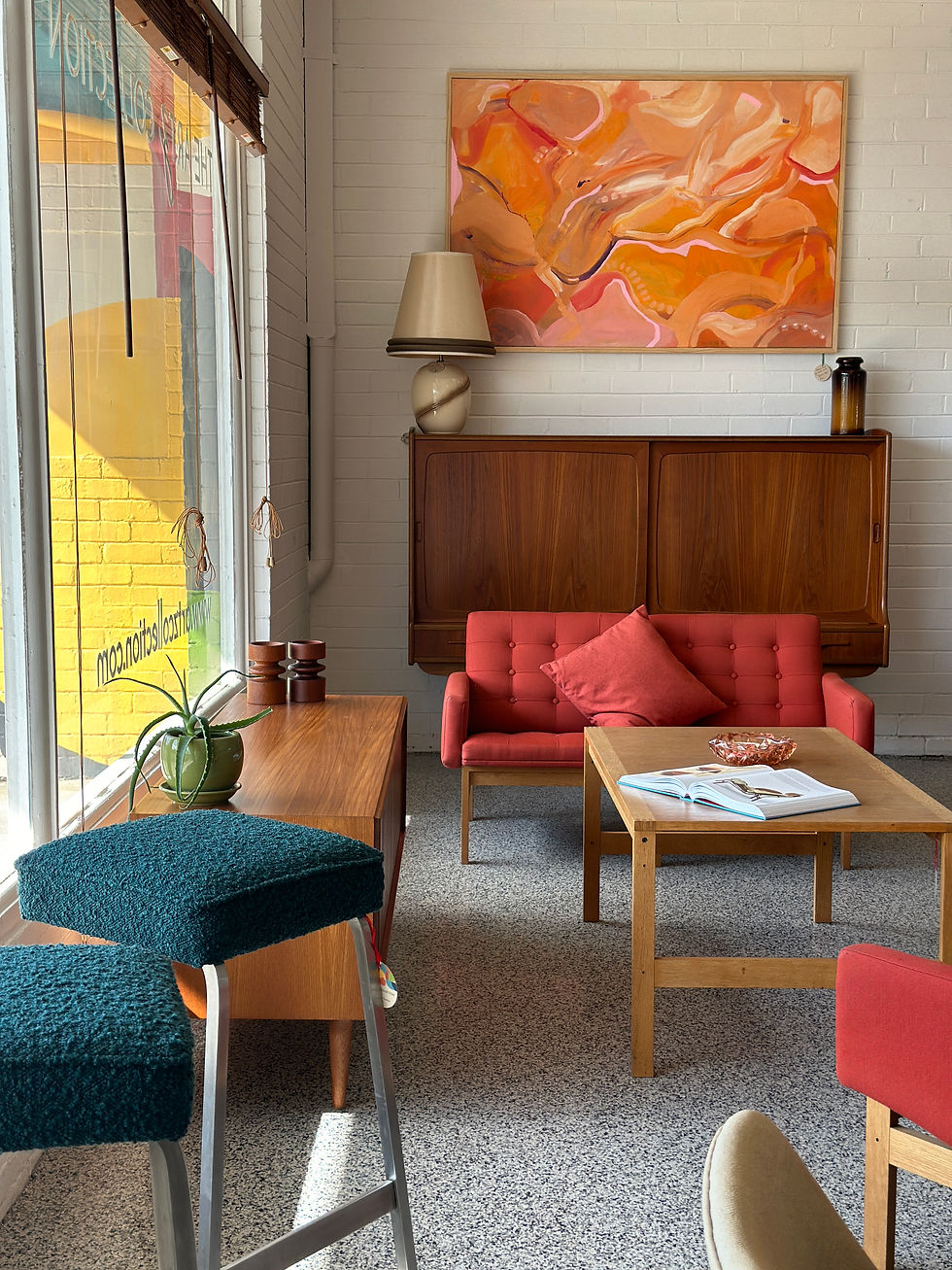Why Mid-Century Furniture is Timelessly Stylish
- Helene Artz

- Jul 15
- 3 min read
In the world of design, few styles have captured the imagination and admiration of décor enthusiasts as much as vintage mid-century furniture. Characterized by its sleek lines, functional form, and unique materials, this design aesthetic evokes a sense of nostalgia while remaining incredibly relevant today. From the iconic Eames chairs to the low-profile sofas of the 1960s, these pieces are more than just furniture; they are a reflection of an era defined by innovation and creativity.
The Allure of Vintage Mid-Century Furniture
Vintage mid-century furniture is often celebrated for its ability to blend seamlessly into various interior styles. This versatility is one of the key reasons why it continues to charm collectors and designers alike. Pieces from the mid-20th century effortlessly complement modern, traditional, or eclectic spaces, making them a go-to choice for anyone looking to elevate their home décor.
Many pieces were designed with a functional purpose, ensuring they not only look good but serve everyday needs. For instance, the classic credenza provides ample storage and style, while the minimalistic dining tables focus on fostering connection during meals.

The History Behind the Design Movement
To truly appreciate mid-century furniture, it's essential to understand its historical context. The mid-20th century was a time of dramatic change; post-World War II, the design world began embracing new materials and manufacturing techniques. Designers like Charles and Ray Eames, George Nelson, and Arne Jacobsen revolutionized the way people perceived furniture by creating pieces that were as functional as they were aesthetically pleasing.
The movement was heavily influenced by the arts and crafts movement, emphasizing workmanship and simplicity. This focus on craftsmanship is what sets vintage mid-century furniture apart. The materials used—such as teak, walnut, and molded plastics—enhance both durability and style, making these pieces last longer than their contemporary counterparts.

Sustainability and Timelessness
Today, sustainability is a crucial theme in design and décor. Vintage mid-century furniture shines in this area, offering a responsible alternative to mass-produced items. By choosing vintage pieces, you’re contributing to reducing waste and promoting a more sustainable lifestyle.
Moreover, the durability of these items ensures that they can be passed down through generations. Unlike modern furniture, which often falls apart or goes out of style quickly, well-maintained mid-century pieces can appreciate in value, making them a wise investment. To keep your vintage items in prime condition, ensure they are cleaned and cared for regularly.
Beyond practicality, mid-century furniture tells a story, connecting the past with the present in a way that modern designs often fail to do.
Decorating with Vintage Mid-Century Furniture
Incorporating vintage mid-century furniture into your home can create an inviting and stylish environment. Here are some tips to effectively decorate your space with these timeless pieces:
Mix and Match: Don't hesitate to combine different styles. A mid-century coffee table can stand out beautifully against a contemporary sofa.
Color Palette: Many mid-century pieces feature bold colors or wood finishes that can serve as focal points in your home. Use these colors to guide your overall color scheme.
Statement Pieces: Invest in one or two standout pieces, like an iconic Eames lounge chair or a sleek sideboard. These can become conversation starters in your living space.
Layering: Incorporate textiles, plants, and artwork that complement your mid-century furniture. A mix of textures can add depth and interest to your décor.
Functionality: Remember that mid-century design prioritizes function. Choose pieces that not only fit your style but also serve a purpose in your space.

The Future of Vintage Mid-Century Furniture
As our lives become more fast-paced and technology-driven, the longing for simpler times and quality craftsmanship becomes stronger. Vintage mid-century furniture resonates with this sentiment, appealing to those who appreciate the artistry and integrity of well-designed pieces.
Furthermore, as more people embrace eco-conscious living, the demand for vintage furniture continues to grow. Upcycling, refurbishing, and mixing vintage items with contemporary décor are trends that bring new life to this classic style.
By investing in vintage mid-century furniture, you’re not just decorating your home—you’re embracing a lifestyle that values sustainability, creativity, and timeless beauty. Whether you're a seasoned collector or just beginning your journey, there’s something captivating about owning a piece of history that has stood the test of time.
In summary, vintage mid-century furniture remains an essential aspect of interior design, charming many with its unique lines, functional form, and sustainable nature. This design movement has instilled a sense of nostalgia while remaining versatile and relevant. By integrating these pieces into modern homes, you celebrate not just a style but also an ethos of craftsmanship, sustainability, and timeless quality. Explore the beauty of vintage mid-century furniture and discover how it can enhance your living space. For more information, visit mid-century furniture.


Comments